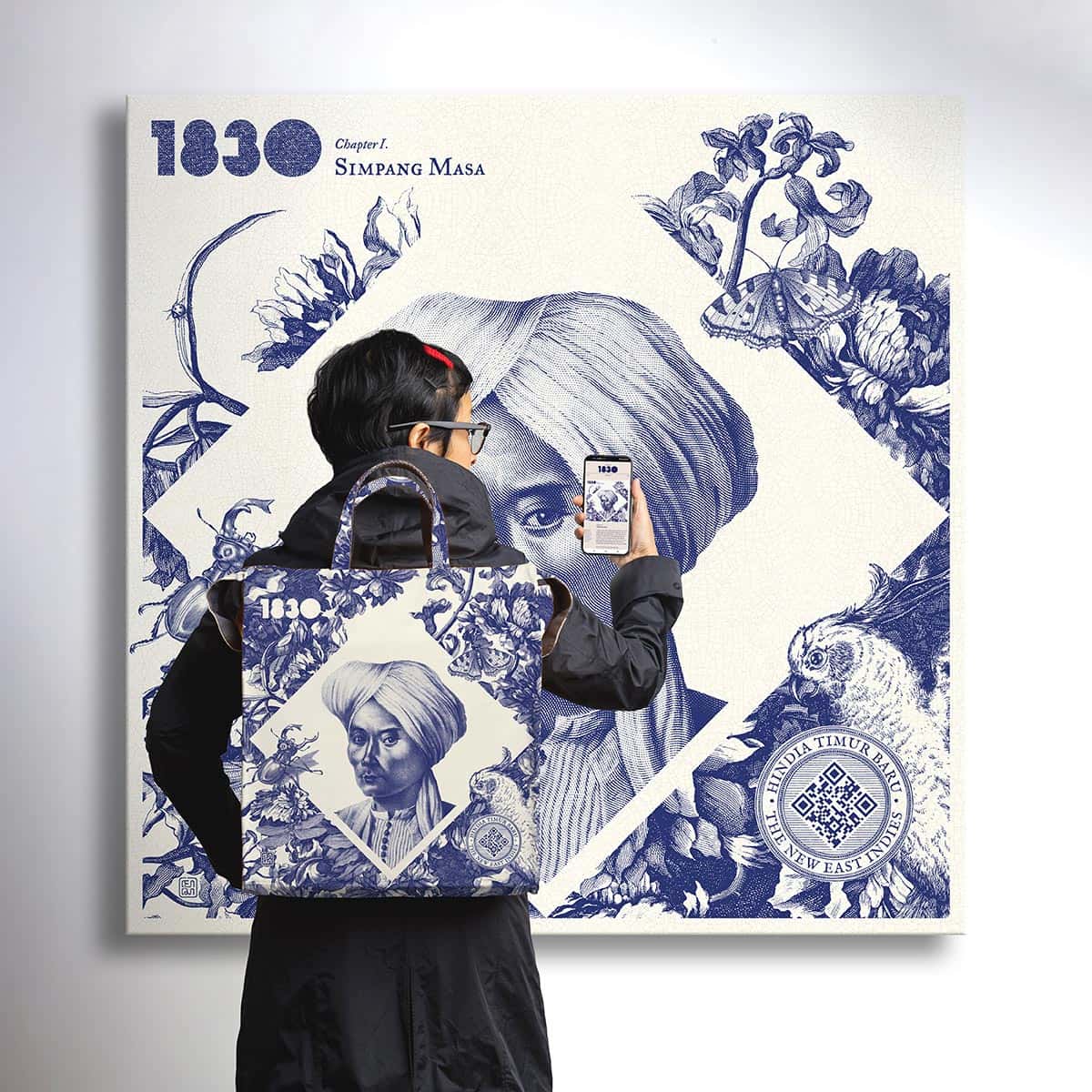EN / ID
1830 explores the use of everyday objects and pop culture as a narrative format to reframe Java’s complex histories through a postcolonial lens.
Combining a study of material culture and autoethnographic research, the project highlights the events surrounding the Java War (1825-30) and its aftermath, beginning with Prince Diponegoro’s treacherous arrest in 1830. It reconstructs missing narratives of Javanese identity and repositions them within a global cultural discourse. Curated by visual artist Melissa Sunjaya and historian Peter Carey, this collaboration draws from transdisciplinary and multicultural creators.

Using visual methodologies to “reverse the gaze,” 1830 transforms the visual language of the Western approach into a platform for Javanese storytelling. In so doing, it addresses ruptured identities through design, dialogue, and decolonised imagination.
In the early 17th century, the Dutch East India Company (VOC) imported millions of blue-white porcelain from China to Europe. Only the wealthiest few could afford these early hand-painted chinaware collections, the fruit of elaborate craftsmanship. They were initially collector’s items. But, when the supply chain for these goods was interrupted in 1644 with the fall of the Ming Dynasty, Delft ceramicists began imitating Chinese porcelain. This made what became known as ‘Delft Blue’ more accessible to the general public. It also influenced the emergence of other luxury trades, including Azulejo ceramics in Portugal and Toile de Jouy textiles in France. The blue pigments used in these creations were obtained from indigo grown on forced plantations in Java, India and Africa. This was in turn tied to the practice of colonial slavery.
Today, this ‘Indigo Blue’ cultural appropriation is still evident in high-end fashion and modern lifestyle products. Furthermore, the aesthetics of antique Delftware evoke a sense of familiarity with the forgotten past of Asia and Africa. Historical lithographs from the British Library and Rijksmuseum are interpreted through the Indigo Blue aesthetics. These incorporate the Bauhaus approach in using geometric designs to disrupt and challenge visual traditions rooted in a Western colonial aesthetic. Honouring the Javanese tradition of batik and woven textiles as storytelling mediums, the project’s rich visual explorations are transposed into modern wearable art. This serves as a catalyst for cultural preservation and social change. These reimagined archives become contemporary collages that underscore 19th-century Java’s shifting global identities. These are inspired in part by Peter Carey’s lifetime research on the Babad Diponegoro, now (2013) a UNESCO Memory of the World manuscript.
Project 1830 is a bicentennial commemoration of the Java War (1825-1830), a pivotal event which reshaped modern Javanese history. The project aims to generate new perspectives from a largely overlooked past. Here it draws on pop-culture narrative formats which blend illustration, slow fashion, and extended reality. This cross-platform experience bridges wearable artefacts and digital scholarship using QR-linked cognitive exhibitions. Each piece is a limited-edition serigraph. Designed with zero-waste principles in mind, they are all handcrafted through fair and ethical practices. The result is a dynamic fusion of traditional craft and new media. This invites viewers to explore shared histories through layered sensory experiences.
As this investigation expands through community discourse and international collaboration, a manifesto has been developed as a guiding framework. This invites artists, designers, researchers, educators, and organisers from diverse backgrounds to participate together. We aim to bridge tradition and innovation, the local and the global, the personal and the collective. This is not only about reinterpreting the past, but also about shaping the future. Project 1830 begins with Java, but its questions are universal:


